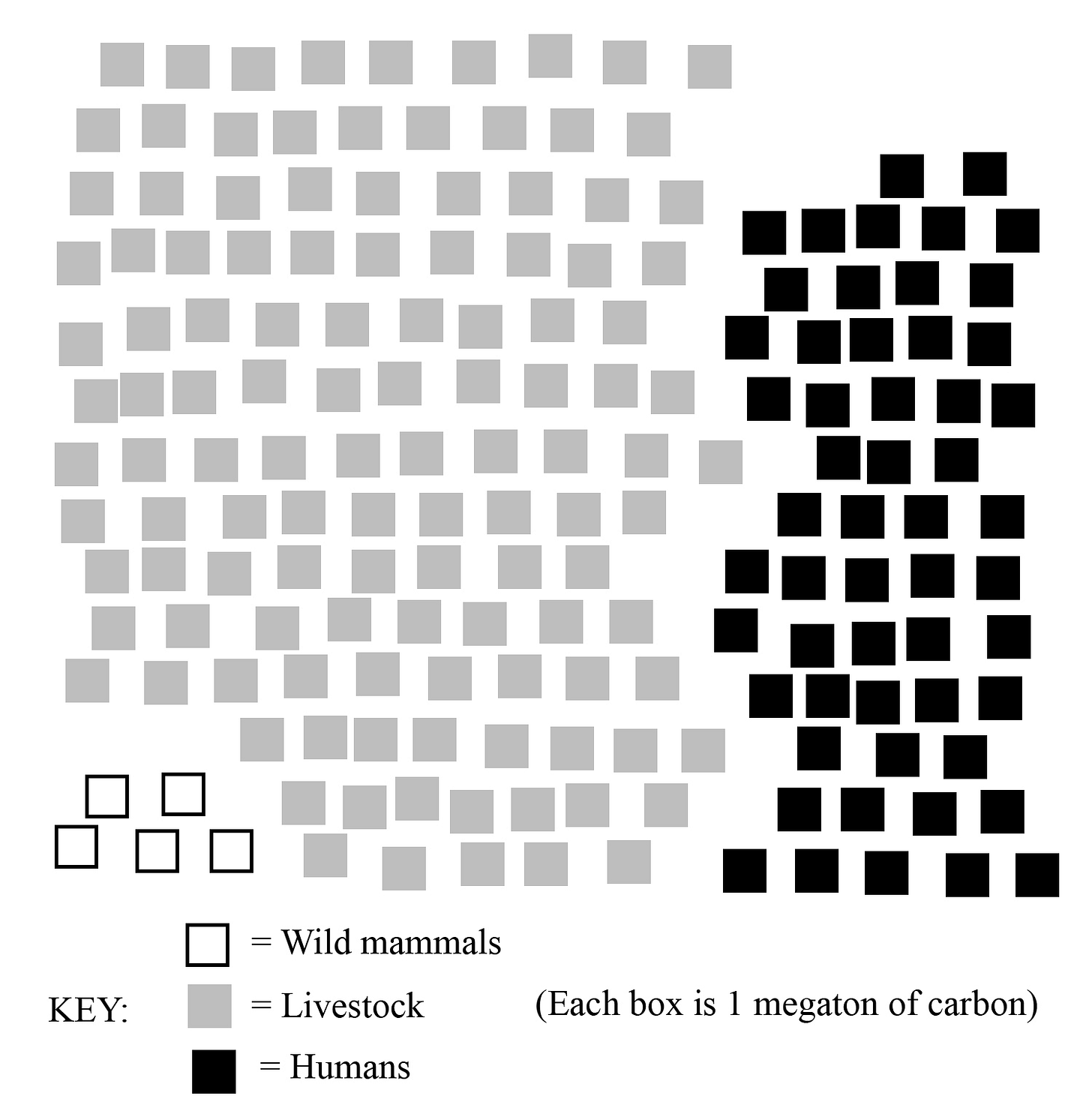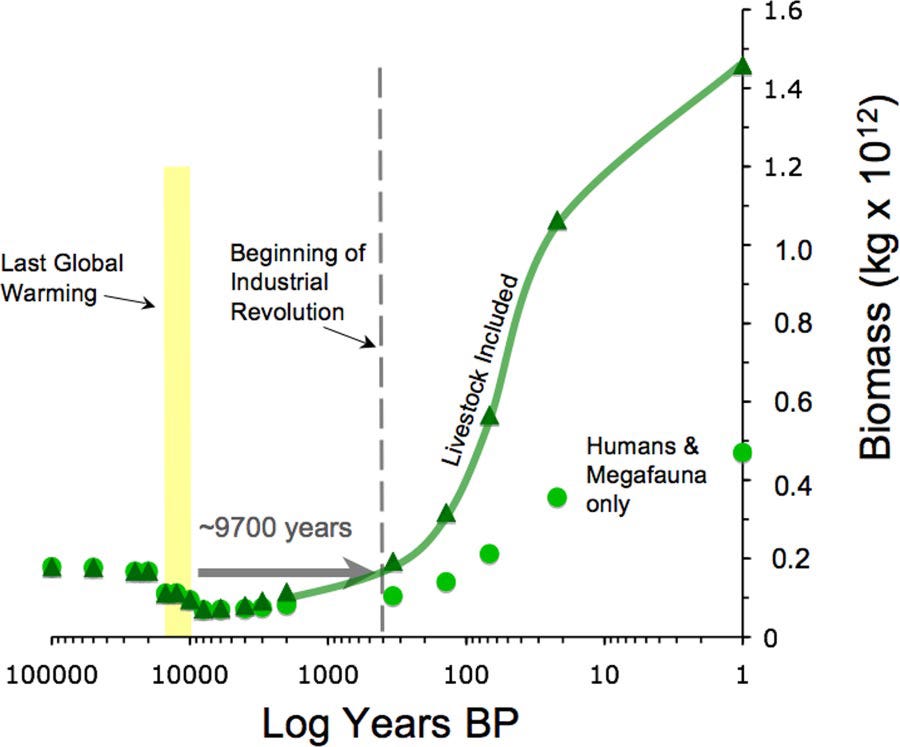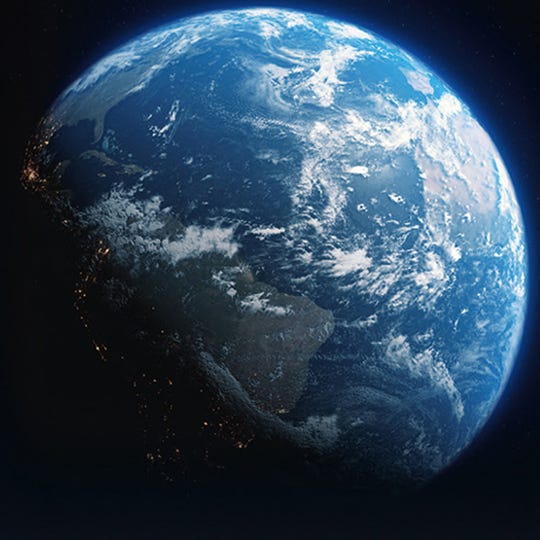The biology of limits to growth
Humans have completely overrun the Earth. Humans are now a biological threat not only to other living creatures, but to themselves as well. For our own sufficiency and wellbeing, the biological footprint of the human economy must be much smaller.
We usually think of “sustainability” in terms of insuring that Earth’s resources can support the world’s eight billion humans. The Ecological Footprint Network has said that we would need the resources from 1.7 Earth-sized planets for the current world economy to be sustainable. But would even 1.7 Earths also sustain all the other life forms on the planet as well? And where, exactly, would we be without them?
We can understand this problem better with some basic statistics on biomass distribution.
Human biomass is only 3% of the total of all animal biomass. (Most animals are creatures such as insects, other arthropods, and fish.) Animal biomass, in turn, is less than 0.5% of the biomass of all plants, which amount to 450 Gt C (gigatons of carbon biomass). At first, it seems that we’re hardly taking up any of the planet’s biomass capacity at all!
But obviously, humans require specific kinds of biological support. We’re not plants—we can’t directly manufacture our food from sunlight and soil. We’re not fish—we can’t breathe in water. We need to think about the biomass of humans in relationship to other organisms in our ecological niche.
In the environments which support large mammals, human domination is almost total. Humans and their livestock today possess a carbon biomass thirty-five times more than all wild land mammals on the planet combined, according to Vaclav Smil. And humans don’t comprise most of that biomass, livestock do! Only about one-third is humans, with about two-thirds being livestock. (See figure 1.) This is a complete turnaround from one hundred thousand years ago, when all hominid species together were not even 1% of all mammal biomass. Now, humans and livestock are essentially the only mammals in town.

Anthony Barnosky studied the biomass of megafauna—large land animals that, as adults, weigh at least 100 lbs. or 45 kg. He estimated that megafauna biomass has increased over seven times just since the Industrial Revolution. (See figure 2.) Unfortunately, this is only good news for humans and their livestock; wild animal biomass is crashing.

Species are going extinct at a rate 1000 times greater than the normal rate of extinction. Plant biomass, which is 80% of the biomass of all life, is in sharp decline due to human influence—less than half of what it would be otherwise.
Large wild animals have dramatically declined, but smaller creatures such as bats, snails, amphibians, and insects are also rapidly disappearing. This is clearly unsustainable. It is a practical as well as an ethical problem; no species survives alone.
The last major mass extinction event was 66 million years ago, when an asteroid collided with Earth, killing off the non-avian dinosaurs and driving three-quarters of all species to extinction. But today, we are the asteroid. If we inadvertently trigger a sixth great extinction event, could we guarantee that we would not be one of the extinct species? (Hint: this is a rhetorical question.)
We could go on. We could discuss soil erosion — which is 10 to 80 times faster than the natural rate of soil formation. We could discuss livestock agriculture’s climate impact: we could deal with climate change if we drastically alter our diets and aggressively reforest land.
We could, as E. O. Wilson has advocated, turn over half of the planet’s land to wilderness to reverse biodiversity collapse—almost certainly impossible without halting most livestock grazing. This would also protect the many indigenous populations that would be displaced by further aggressive clearing of land for agriculture.
But there is a limit to the extent that words, facts, and logic can change anyone’s mind. The main thing we need to say is simply “This is madness! Stop it!” The days of cautious debate are long past. The only path forward is one that completely alters our approach to the land and to other life on earth, together with our diets and everything else about our lives which that implies. Entirely or largely plant-based diets are healthy and not as difficult to adopt as many people believe. Radical solutions are now necessary.




A very clear statement of our current situation and how to address it. Living simply and adopting a plant-based diet can enrich our lives tremendously. Thanks, Keith!
I will pass along this link in hope that meat eaters will read it. But will they? And how do we work around the stubborn percentage who refuse to believe in anthropogenic CC? And what if any progress could we make if democracy in America collapses?